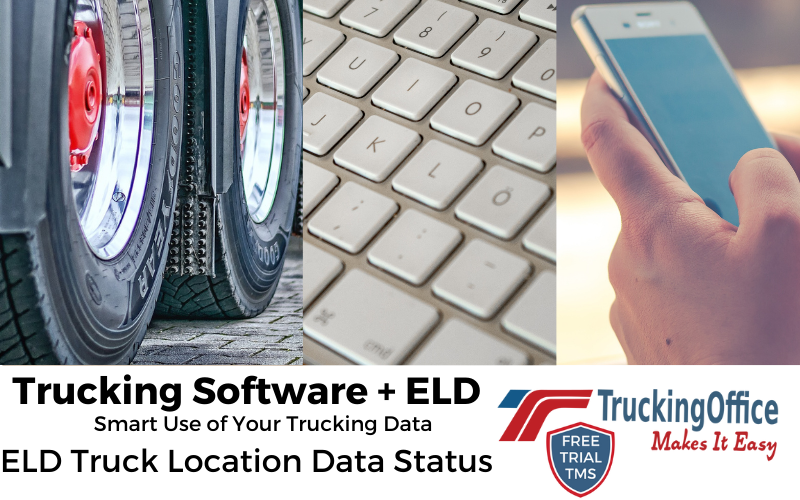There has been a lot of concern about the Big Brother aspect of ELDs. Who’s watching you? Who knows where you are? We’re not going to say that it’s paranoid to be worried about these things, but ELD truck location and load tracking may be a good thing for truckers.
We’ve heard about the different types of load tracking. Everything from having individual trackers on pallets to having a specific smartphone set up to relay constant location data.
ELD Truck Location Data
Dispatchers who deal with small fleets or owner-operators need to be updated about the loads that they’ve scheduled. It’s not that they don’t trust their drivers to deliver. It’s about customer management. When the customer wants to know where their freight is, the dispatcher needs to give them an accurate answer.
In the past, that meant phone calls to drivers, who may or may not be in cellphone range at that moment, or unable to take the call when the dispatcher reaches them. With the presence of ELDs, it makes sense to use that data in another way: to record the location of a load.
TruckingOffice Efficiency
If you use TruckingOffice TMS, you know that we love to reuse data. When a dispatcher adds a load, a route is created. Then the data is used for IRP, IFTA, billing, Company Overview Reports, revenue and expense reports. We don’t ask you to reenter any data. We use it over and over to make running your trucking business faster and more effective.
We have the same attitude toward your ELD. Your truck is collecting data:
- speed
- engine status
- RPMs.
The driver is entering data status.
The last piece of the puzzle is the location of the truck itself.
Collecting this data together gives the trucker and the dispatcher the knowledge they need to build a better trucking system and business. When data is used efficiently, it improves the transportation process for everyone.
Updating ELD Trucking Location Data with TruckingOffice ELD
That’s why ELD trucker location data reports are critical. But does it need to be constant?
We don’t think so. TruckingOffice knows that we have a tension between what we can have and what we can afford.
Do you want your smartphone reporting your location minute by minute – using up your data and your phone’s battery? Is that necessary?
To balance that need against knowing where the load is – that’s the exact point we wanted to find.
Where’s my load?
Our ELD now reports an update every 15 minutes of the driver location to the ELD records. The dispatcher can see this data on our TruckingOffice ELD dashboard. So, when a shipper calls and asks that question, “Where’s my load?” then the dispatcher can give them a timely and accurate answer.
We don’t drain your battery. We don’t waste your data. We want you to have the connectivity you need at a price you can afford.
But wait, there’s more!
The whole But Wait, There’s More pitch is so overdone. But in this case, there is a lot more you can get from TruckingOffice.
Using the TruckingOffice ELD also gives you the opportunity to tap into the insane power of TruckingOffice Trucking Management System. Sure, the ELD can work by itself, but combined with the TruckingOffice trucking software, you have access to critical company reports, maintenance management, and customer billing programs that will help you build your trucking business. Don’t spend time off the road when it’s time on the road where you made money. Our TMS goes with you, helping you to determine
- should you take that load?
- is it time to get an oil change?
- are you making money?
- how much do you owe for IFTA and IRP?
Trucking software makes the difference to owner-operators. It will boost your profitability because you’ll know when to turn down a load, when your maintenance should be done to prevent emergencies or breakdowns, where you can tighten your belt, and where you should buy your next tank of fuel.
Managing a trucking business needs trucking software. May we suggest TruckingOffice trucking software? A platform that unites trucking software and ELD is one that will change your trucking business forever.







Trackbacks/Pingbacks